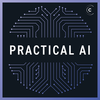This week we’re talking about the recent falling out between Elastic and AWS around the relicensing of Elasticsearch and Kibana. Like many in the community, we have been watching this very closely.
Here’s the tldr for context. On January 21st, Elastic posted a blog post sharing their concerns with Amazon/AWS misleading and confusing the community, saying “They have been doing things that we think are just NOT OK since 2015 and it has only gotten worse.” This lead them to relicense Elasticsearch and Kibana with a dual license, a proprietary license and the Sever Side Public License (SSPL). AWS responded two days later stating that they are “stepping up for a truly open source Elasticsearch,” and shared their plans to create and maintain forks of Elasticsearch and Kibana based on the latest ALv2-licensed codebases.
There’s a ton of detail and nuance beneath the surface, so we invited a handful of folks on the show to share their perspective. On today’s show you’ll hear from: Adam Jacob (co-founder and board member of Chef), Heather Meeker (open-source lawyer and the author of the SSPL license), Manish Jain (founder and CTO at Dgraph Labs), Paul Dix (co-founder and CTO at InfluxDB), VM (Vicky) Brasseur (open source & free software business strategist), and Markus Stenqvist (everyday web dev from Sweden).






